Hasegawa's 1/72 scale
Martin P5M Marlin
by Roland Sachsenhofer

It must have been a breathtaking experience when a thirty-metre-long flying boat, like this Martin P5M Marlin, made the water spray under the roar of its 3500 hp Wright 3350 engines running at full power to get the 36 000 kilos of maximum take-off weight into the air. With a cruising speed of 240 Km/h, the Marlin patrolled with a range of 3300 kilometres, a good 400 Km/h was to be expected as top speed. 11 crew members were usually necessary to perform the tasks for which this giant flying boat had been created.
Sea surveillance and submarine hunting was the métier in which the Martin PM5 Marlin excelled. The design directly continued a success story that had been started with Martin's PBM Mariner a good 15 years earlier. At that time, the Glenn L. Martin Company could draw on a tradition of building seaplanes that dated back to the year the company was founded. From 1940, the PBM Mariner was put into series production on behalf of the US Navy. A total of 1285 examples of this large flying boat were produced between 1940 and 1949; a testament to the performance and excellent reputation that this type was able to acquire during its long career in the war years and the time of the outbreak of the Cold War.
The design of the new Martin Marlin model was intended to improve on the solid basic design of the Mariner and to exploit the potential that still lay within it. Accordingly, the first prototypes closely followed the design of the initial design. However, right from the start, two Wright R-3350 radial engines, still one of the most powerful piston engines ever built, lifted the available power into a new class.
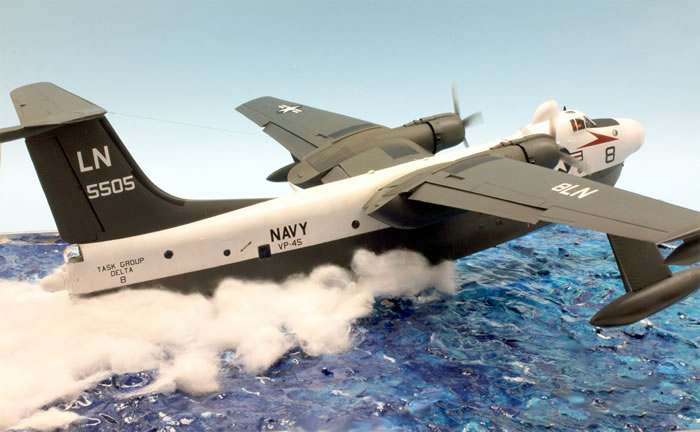
In the course of testing the prototype XPBM-1, which was flown for the first time in 1948, changes were constantly incorporated, so that the outer shape also moved further and further away from the model of the Mariner. A T-tail became standard, and the shape of the hull in the bow area had to be redesigned to optimise seaworthiness. Interestingly enough, the model of the powerful Japanese flying boat H8K "Emily" had provided the impetus for this.
By the time the final production versions appeared, the PBM Marlin had also lost the weapon stands at the bow, centre of the hull and stern that had initially still been fitted. Instead of the foremost weapon turret, the AN/APS-4 search radar was installed, whose semi-circular fairing pulled forward was to determine the Marlin's appearance. In the stern, too, there was no longer a turret; instead, domes were installed for visual observation. Incidentally, the elongated tube with a semi-circular end at the extreme stern end is not a radar dome, but a particularly spectacular observation post: the crew member had to crawl into this tube and then, lying on his stomach, watch the sea through a downward-facing window!
The five disc-shaped detectors of the MAD system were located on the tail boom, which extended far beyond the end of the fuselage. This enabled the position of submerged submarines to be determined, the combating of which was part of the Marlin's operational spectrum.
In keeping with the tradition of its predecessor, the Martin Mariner, the load of weapons to be dropped was carried in the compartments behind the engine cowlings. The weight of this deadly cargo of mines, depth charges or torpedoes was considerable: up to 3,600 kilograms were loaded internally, and another three and a half tons could be attached externally to underwing stations.
The P5M Marlin was in service with the US Navy and the US Coast Guard. Their seven aircraft were returned to the Navy after a short time, however, as maintenance and the procurement of spare parts proved to be too costly for the Coast Guard compared to their operational value. This came just in time for the Navy: a separate training unit for prospective Marlin crews was equipped with the unarmed Marlins. The only other owner was to be the French Navy, to which eleven examples of this large flying boat were delivered between 1957 and 1959. These were subsequently deployed from Dakar in West Africa, but were also sold again by 1964.
The Martin P5M Marlin, BuNo 135505, which I have used as a model here, was flown by the "Maritime Patrol Squadron" VP-45 at the end of the fifties/beginning of the sixties. This unit, originally based in Florida, had a turbulent history and was deployed to a number of theatres during the escalating Cold War in those years. In May 1962, the Marlin shown here was part of "Task Group Delta", in the context of which new tactical procedures for naval warfare were tested. A little later, in October 1962, the aircraft of VP-45 took part in the confusing and fire-dangerous operations surrounding the so-called Cuban Missile Crisis. Never before had the world been so close to the outbreak of nuclear war.
In January 1964, the VP-45 made history once again: it was the last unit of the Atlantic Fleet to give up its flying boats; from now on, all Maritime Patrol Squadrons of the US Navy were equipped exclusively with land-based aircraft, and the time of the spectacular flying boats was finally over.
The kit of the Marlin dates from 1971 and corresponds in every way to the high standard of the time, which Hasegawa played a major role in formulating. In light of this, it is of course not surprising that the cockpit and interiors are completely or as good as empty and the detailing of the engines seems meagre by today's standards. On the other hand, the modeller can expect a sensible parts layout and the best fitting accuracy.
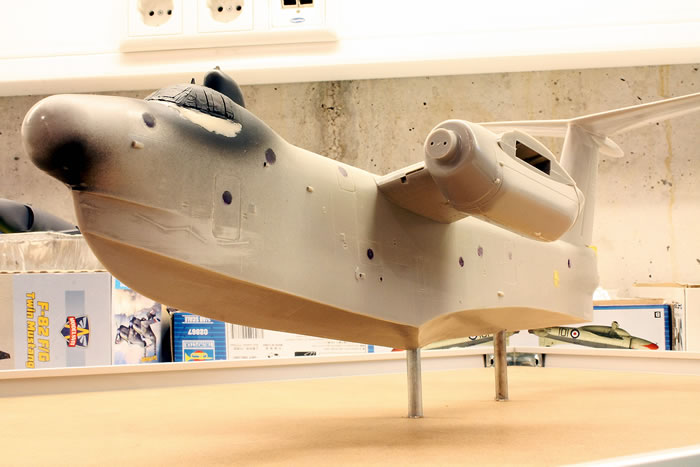
The construction itself therefore went quickly and the energy saved in this way could be invested in post-detailing and refinement. The cockpit interior was completely rebuilt with the help of etched parts, harnesses, pilot seats etc. from the fundus, the engines gained new life with a little attention in the form of ignition cables.
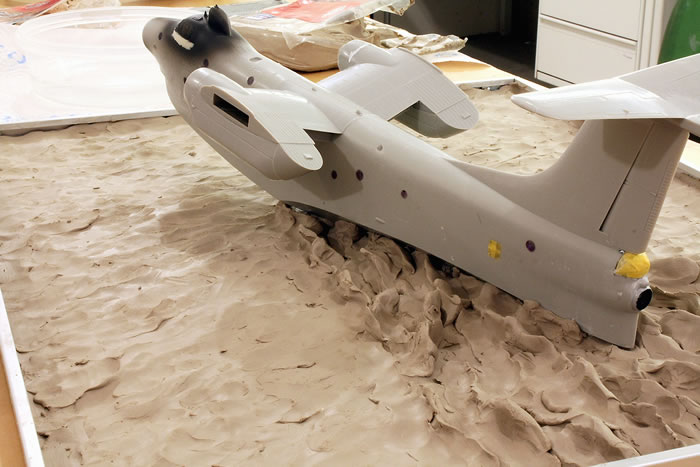
A little thought was required to make the circular MAD detectors on the tail boom. These were not included in my kit - and had they been, they would certainly have been too crude - and so had to be made myself. My solution was to drill suitable holes in a polysterol plate and then cut the surrounding material with feeling so that the desired rings were created. This method actually worked so well straight away that I can recommend it to any modeller who faces the same challenge.
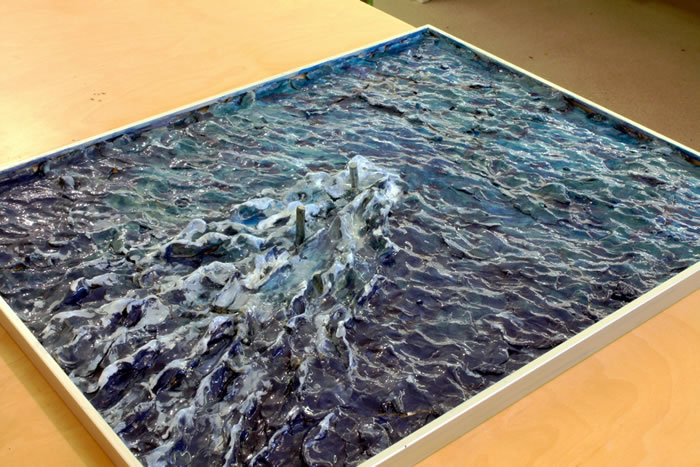
By the way, the markings for this particular machine are from Caracal. This decal sheet is not only recommended because of the range of interesting marlins and the high quality as well as best workability of the decals, but also for the simple reason that the decals of the kit dating from the grey past are unlikely to be used any more.
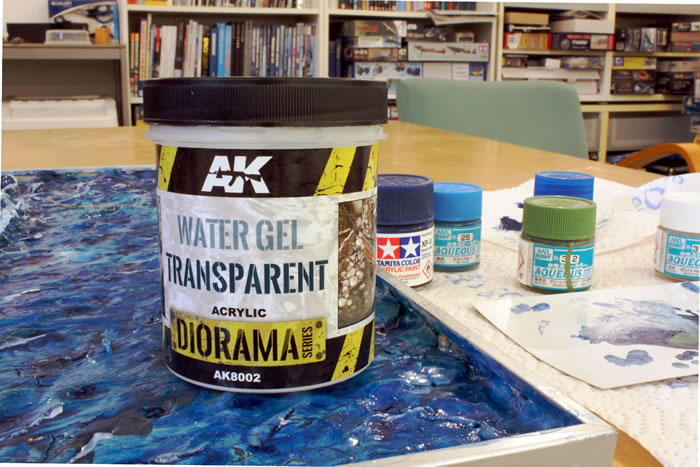
One topic with "flying aircraft models" is naturally the crew in the cockpit. Here, I have made two suitable figures from "PJ Production" so that they can pass as pilot and co of a seaplane of the 60s. In addition to a matching moustache, they also have a headset with a headband and a microphone made of wire strands.
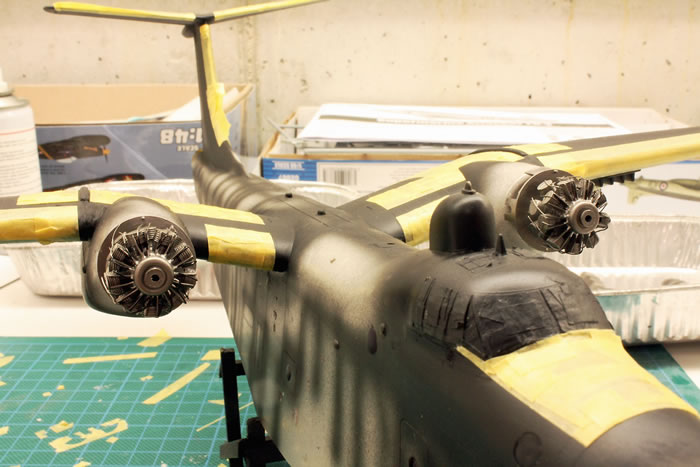
The issue of a flying representation is exacerbated by the need to achieve rotating propellers. Here I was able to draw on the experience that I have gained in the representation of several "moving" models. The question of how this method would look in 1/72nd scale was particularly exciting for me; up to now I have only tried rotating propellers on models in 1/48th scale or larger.
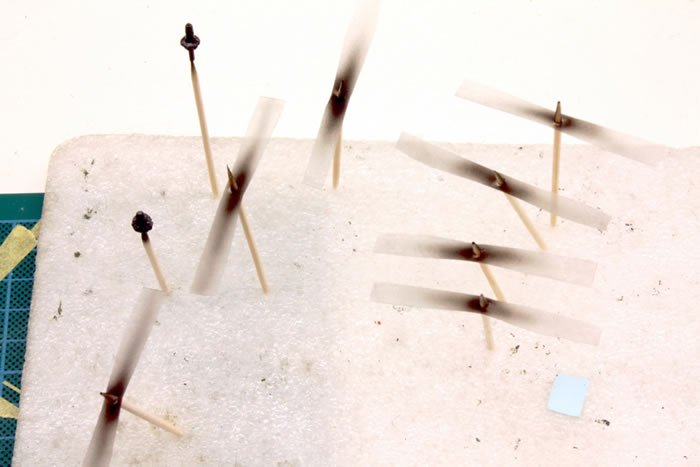
A really big issue with a starting flying boat is the representation of the water around a taking off flying boat. The pictures of the building phase show the main steps: on the wooden back wall of a picture frame I used clay to lay the base of the waves as well as the splashing area around the flying boat resting on two pegs.
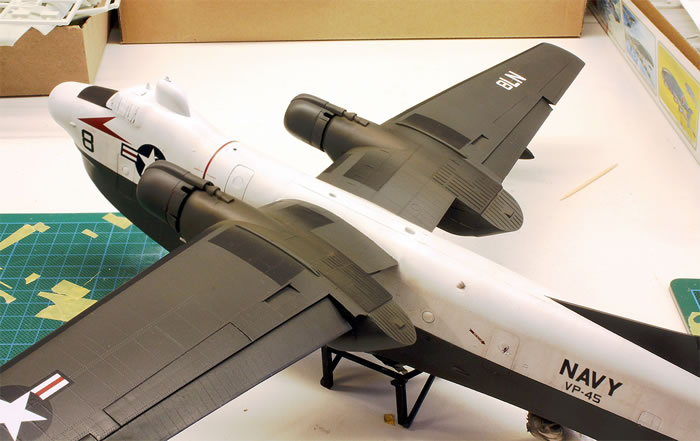
The individual waves were imprinted into the clay with the fingertips in such a way that the wind direction would be at right angles to the longitudinal axis of the launching flying boat.
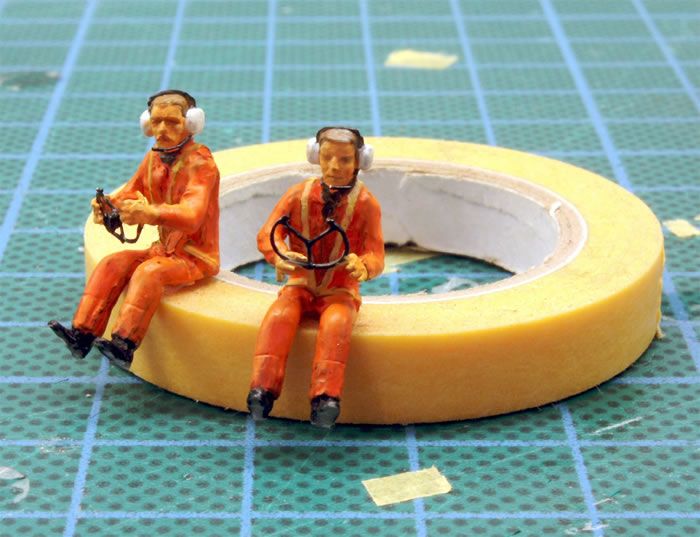
Before the clay was completely dry, the colour of the water was determined with several shades of blue and green, after which the excellent "transparent water gel" from AK could be applied. Then--and again before the gel was completely dry--the spray combs of individual wave peaks were created with acrylic paint.
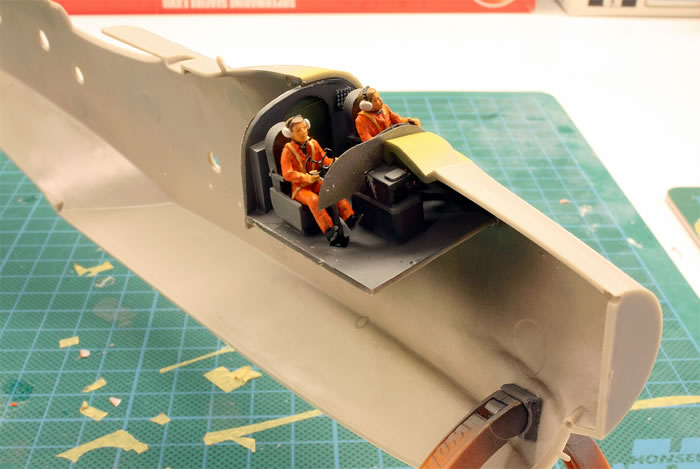
In a final step, the finished model of the marlin was placed and the white water was applied with commercially available cotton wool. For me, this was not only essentially the completion of the water representation but also a particularly pleasurable act!
Finally, and to close the arc, may I say that I am pleased to be able to pay homage to the aforementioned drama and spectacular appearance of a large flying boat with this depiction of a P5M Marlin taking off. After all, this is a sight that can no longer be experienced today!
If you are interested in the building process, please have a look here on Scalemates:
https://www.scalemates.com/profiles/mate.php?id=10148&p=albums&album=86916
As ever, remarks will be appreciated:
ro.sachsenhofer@gmx.at
Model, Images and Text Copyright ©
2022 by Roland Sachsenhofer
Page Created 22 November, 2022
Last Updated
22 November, 2022
Back to HyperScale Main Page

|
Home
| What's New | Features | Gallery | Reviews | Reference | Resource Guides | Forum |